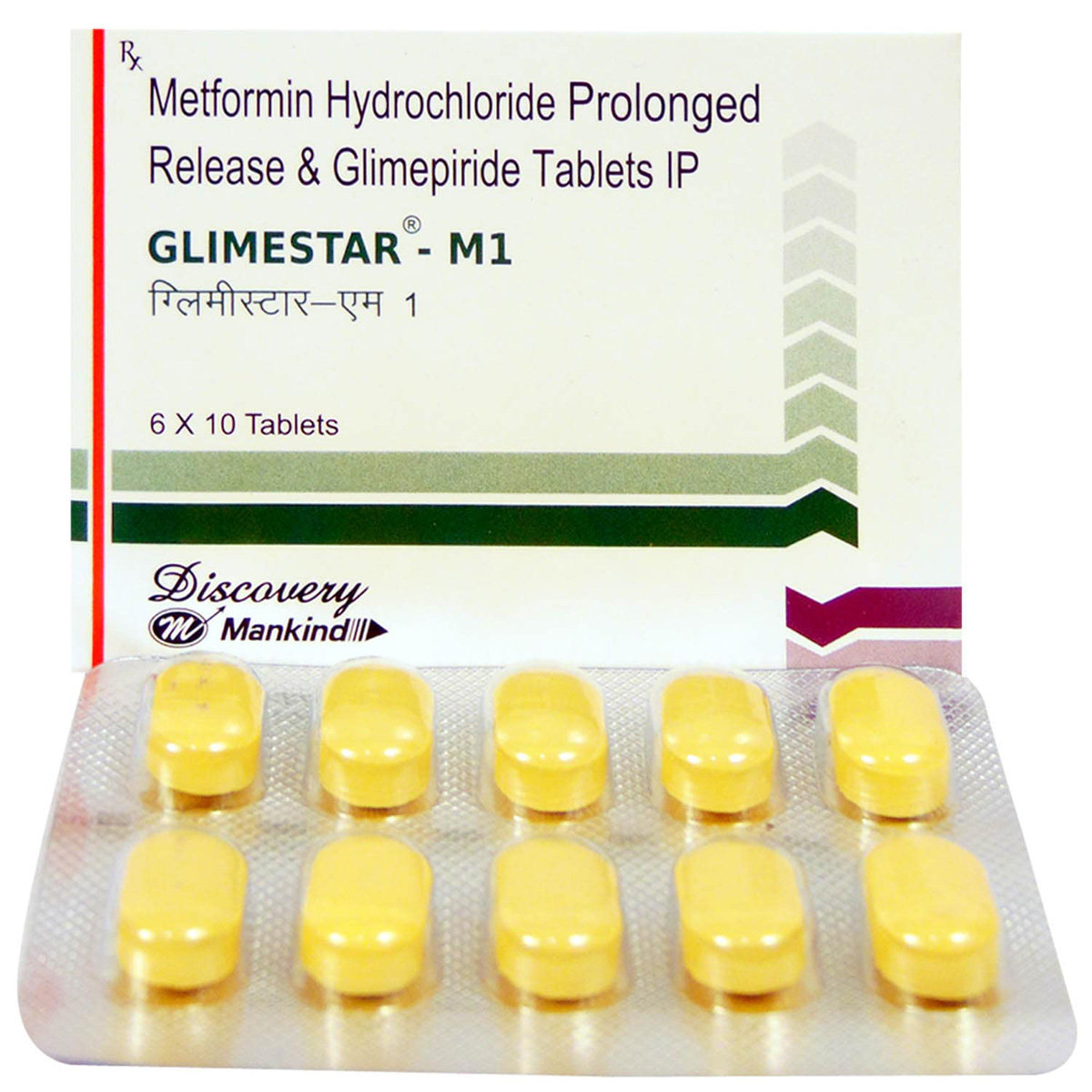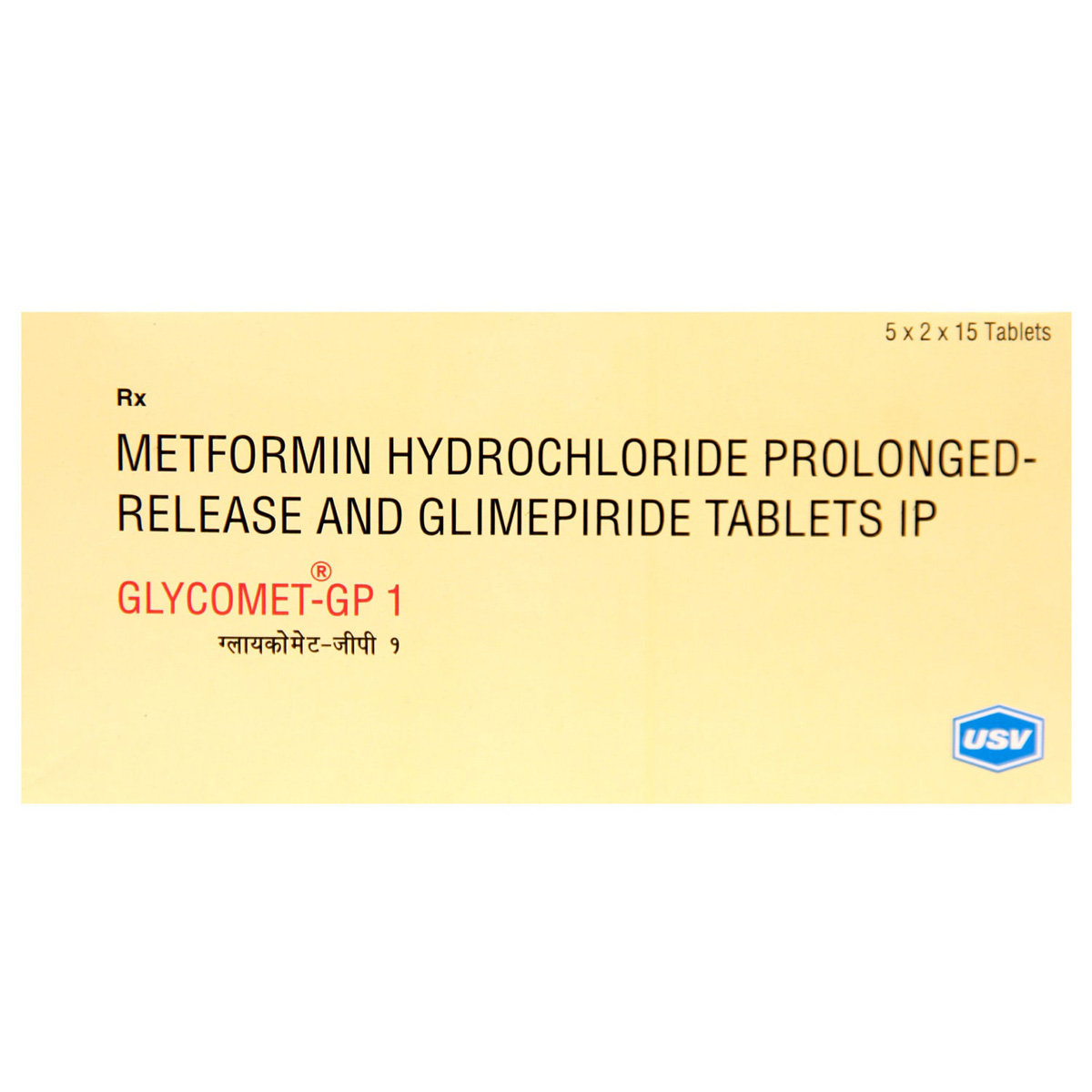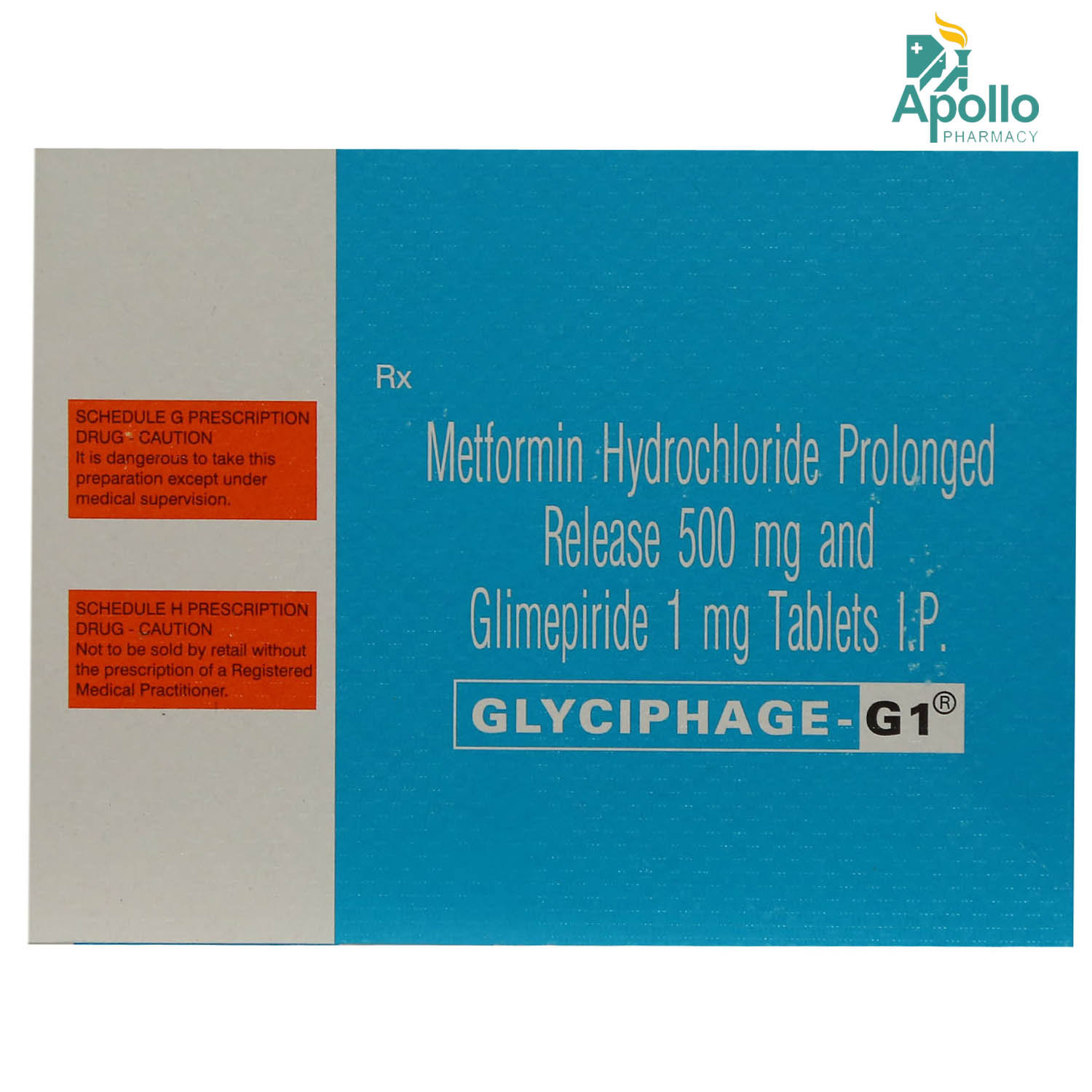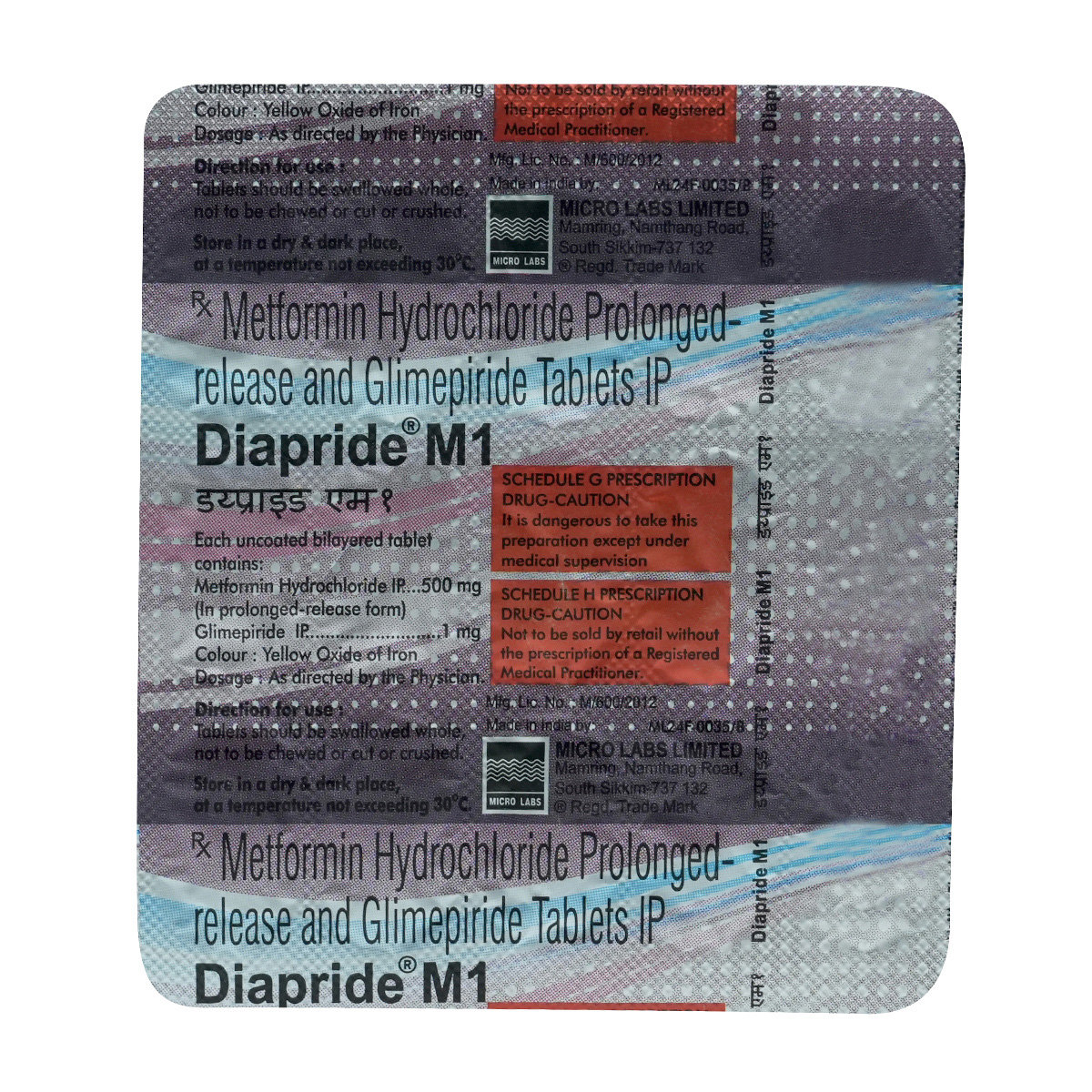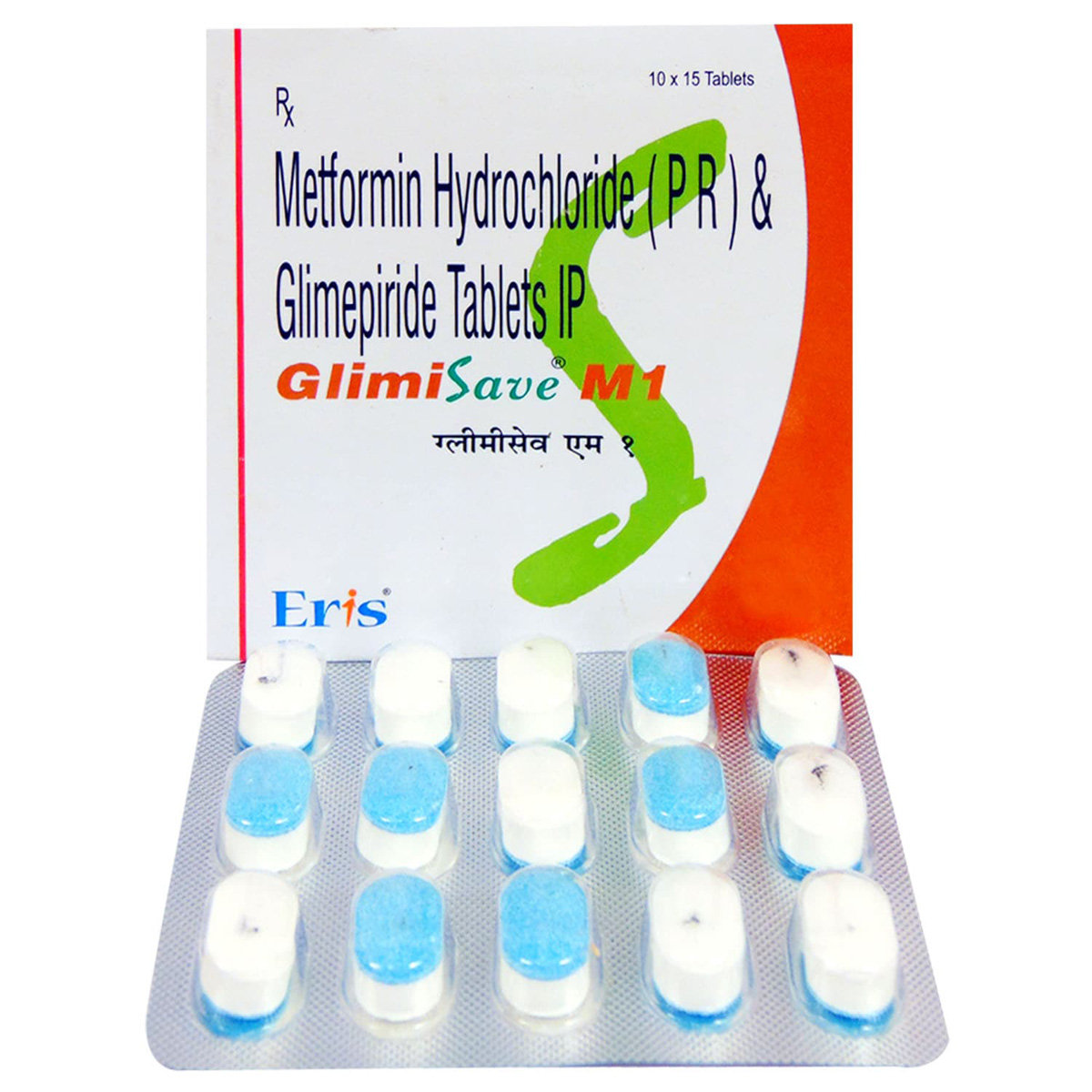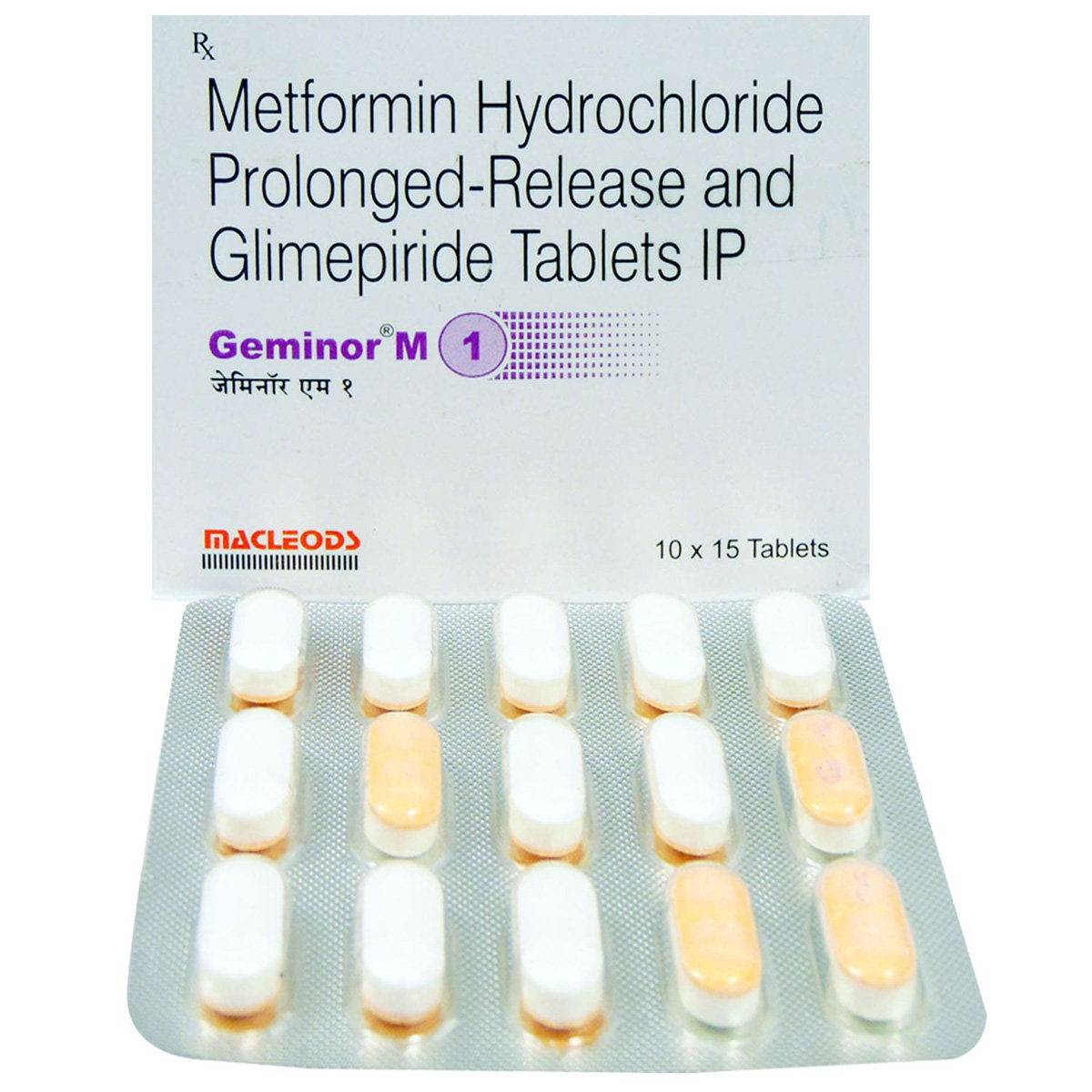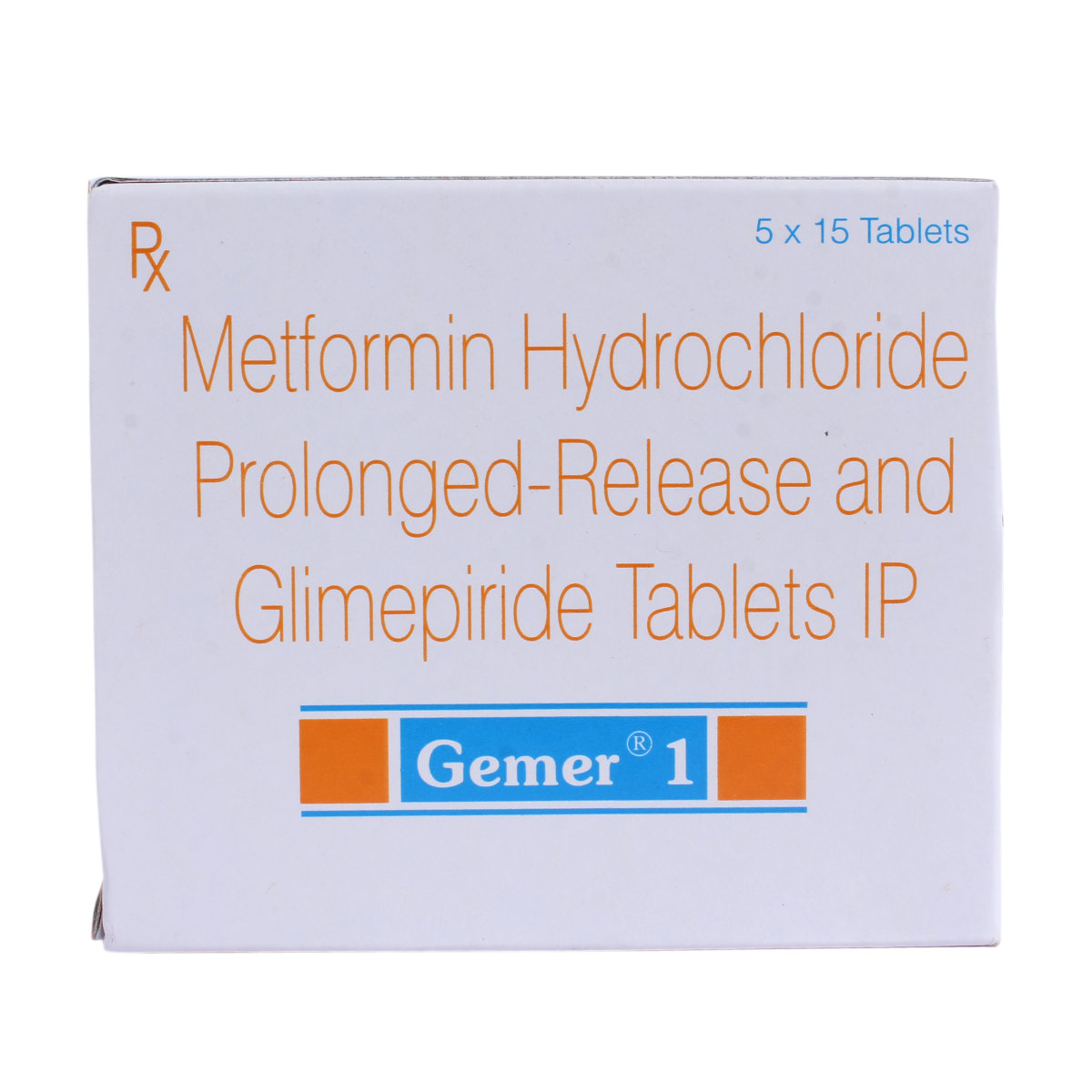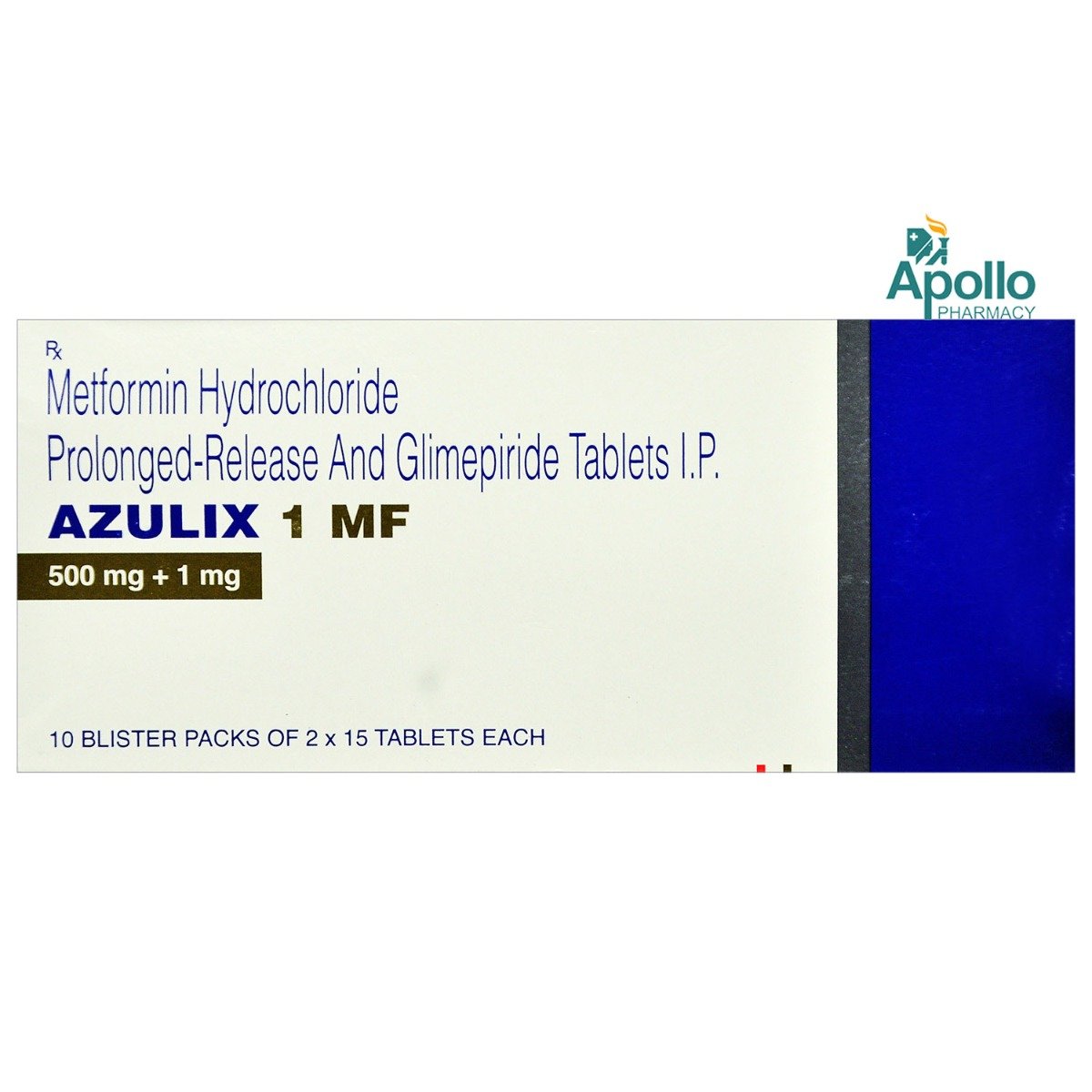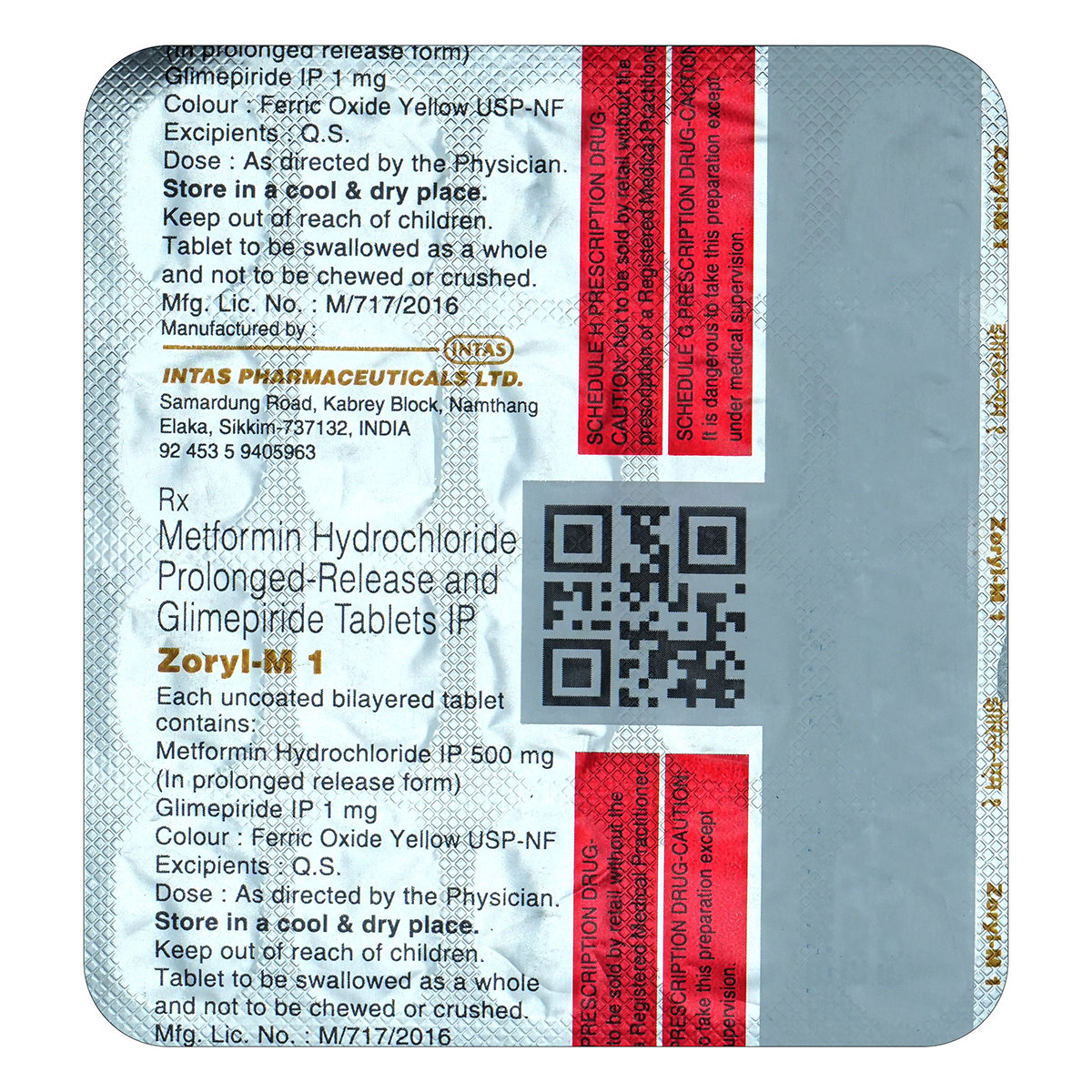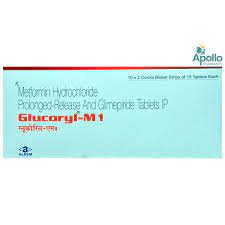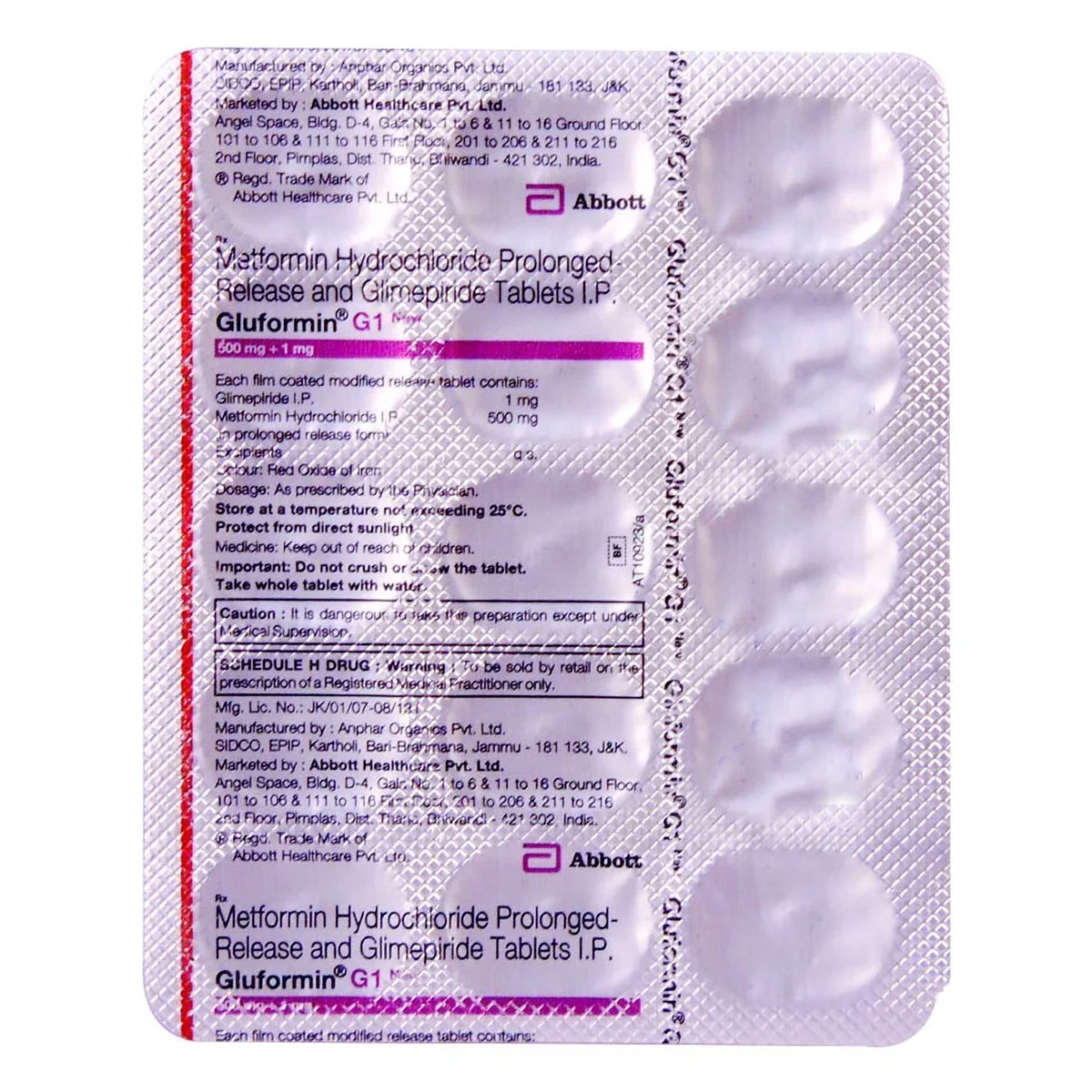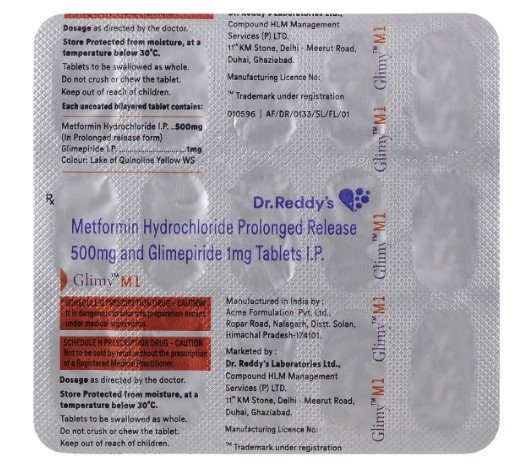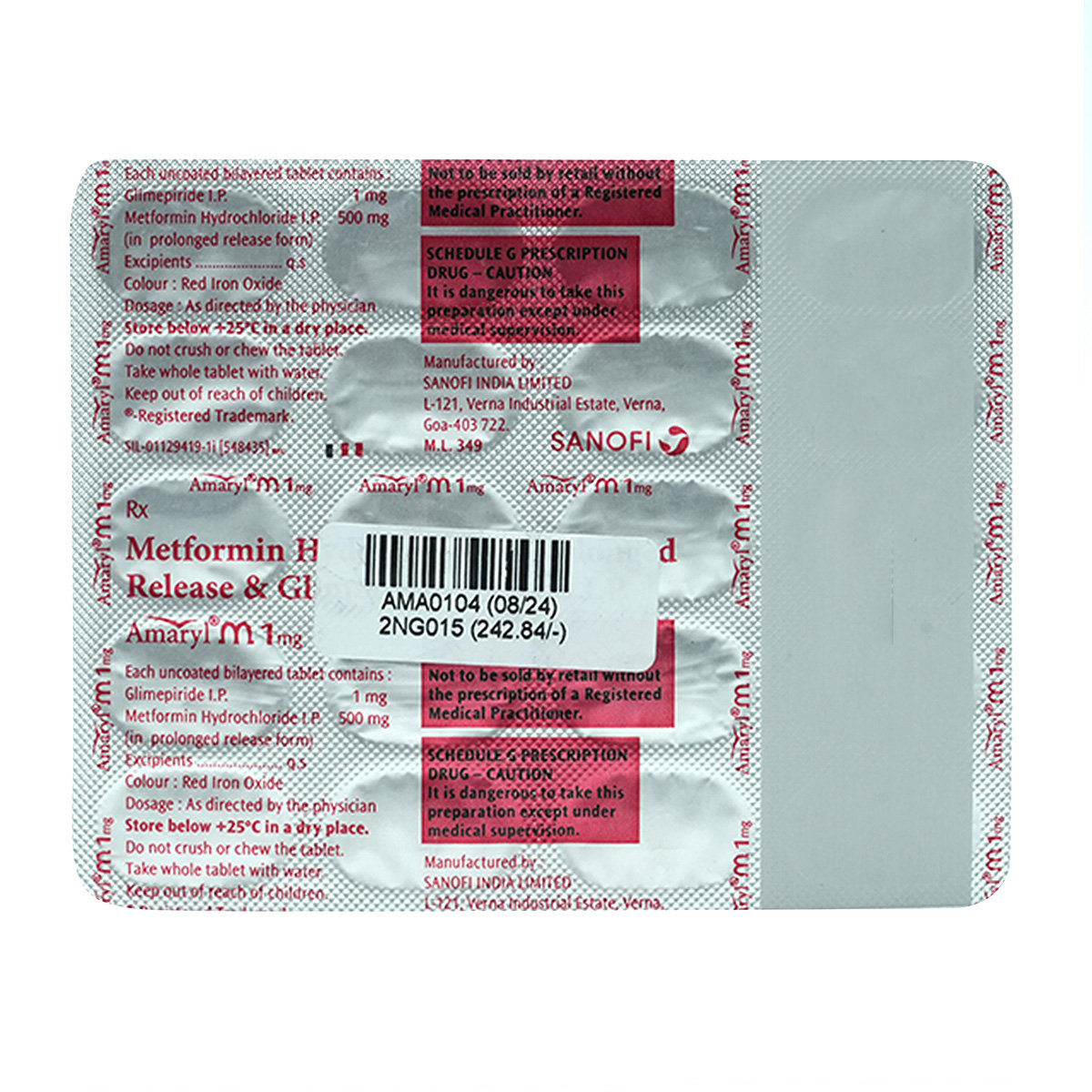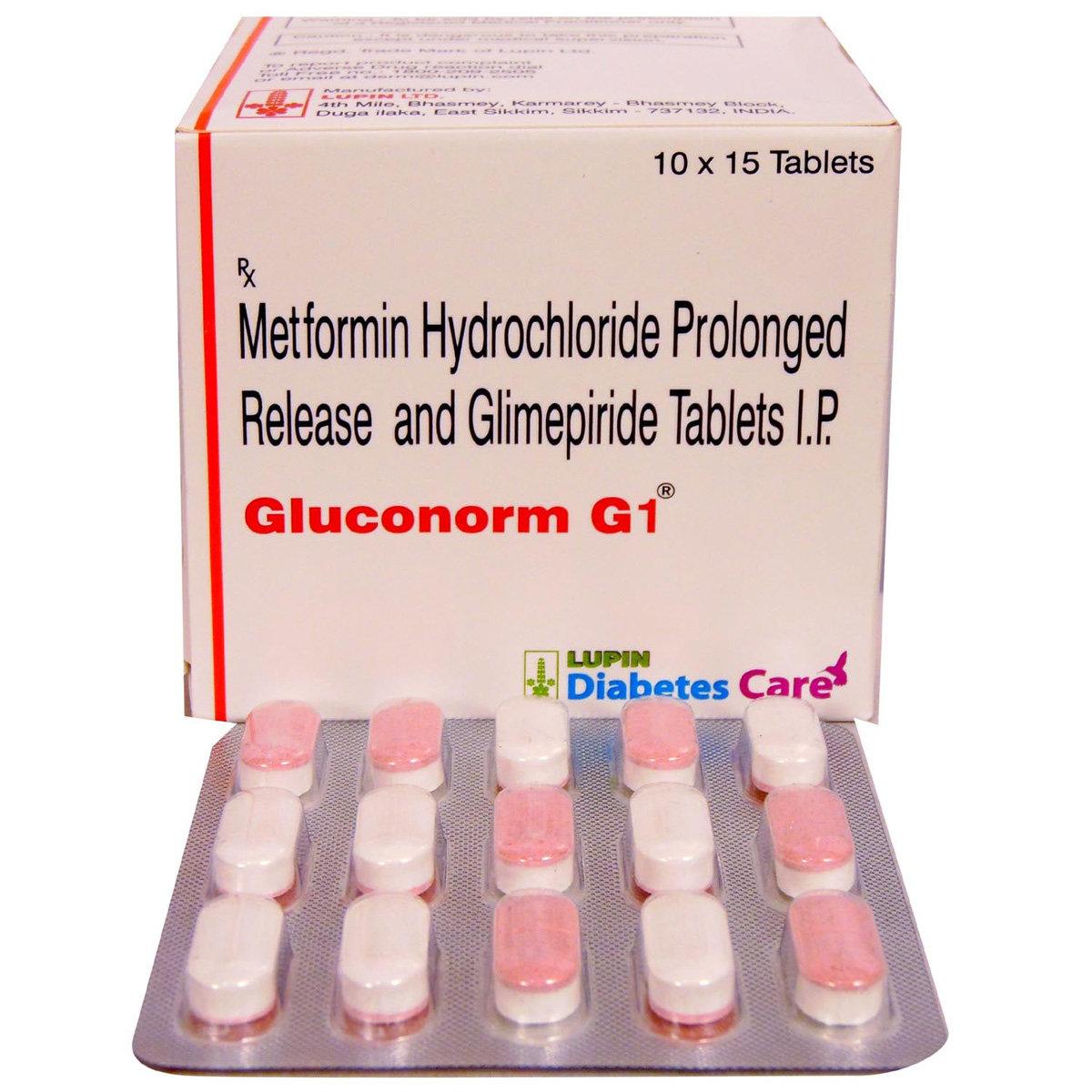Blisto-1MF Tablet 10's
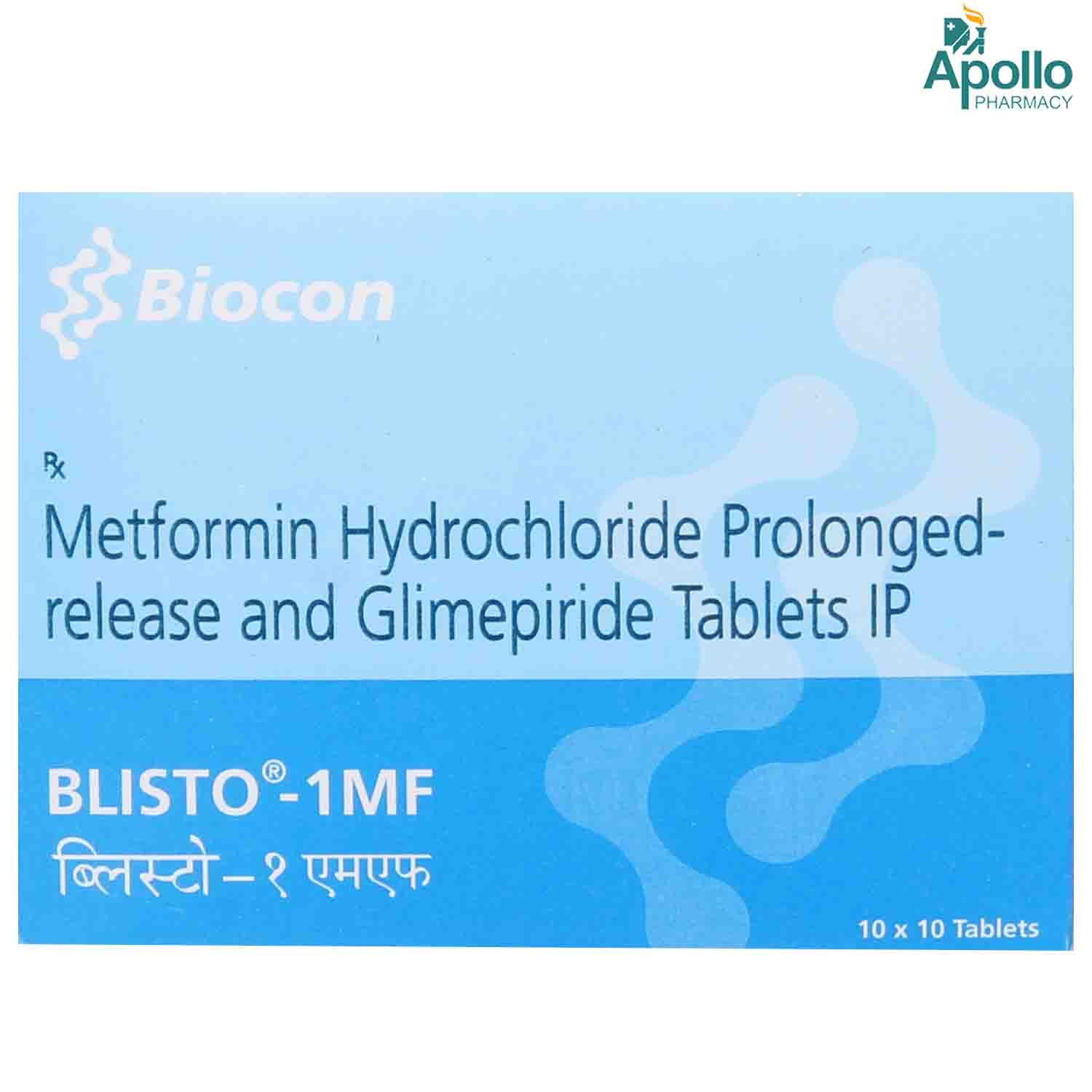
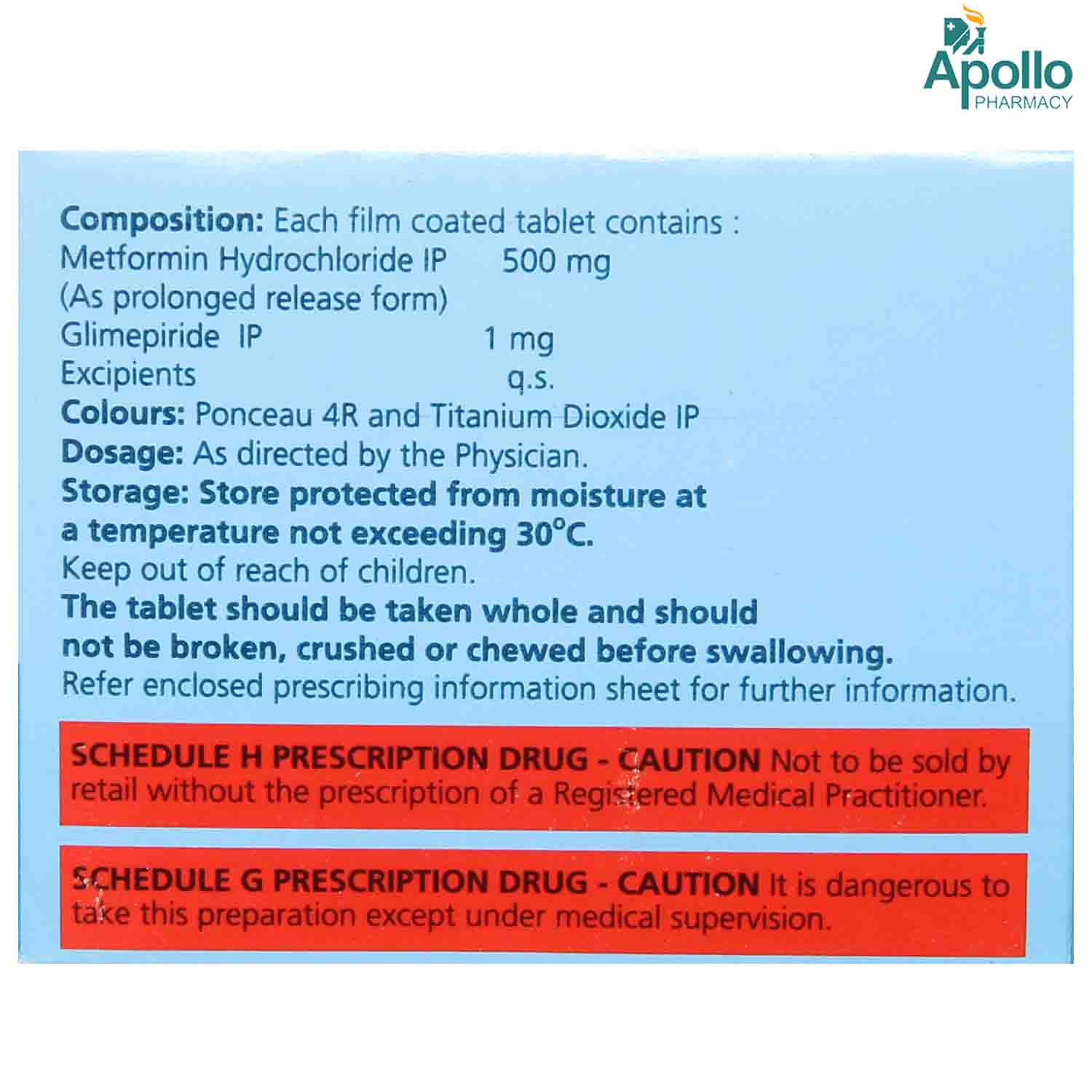
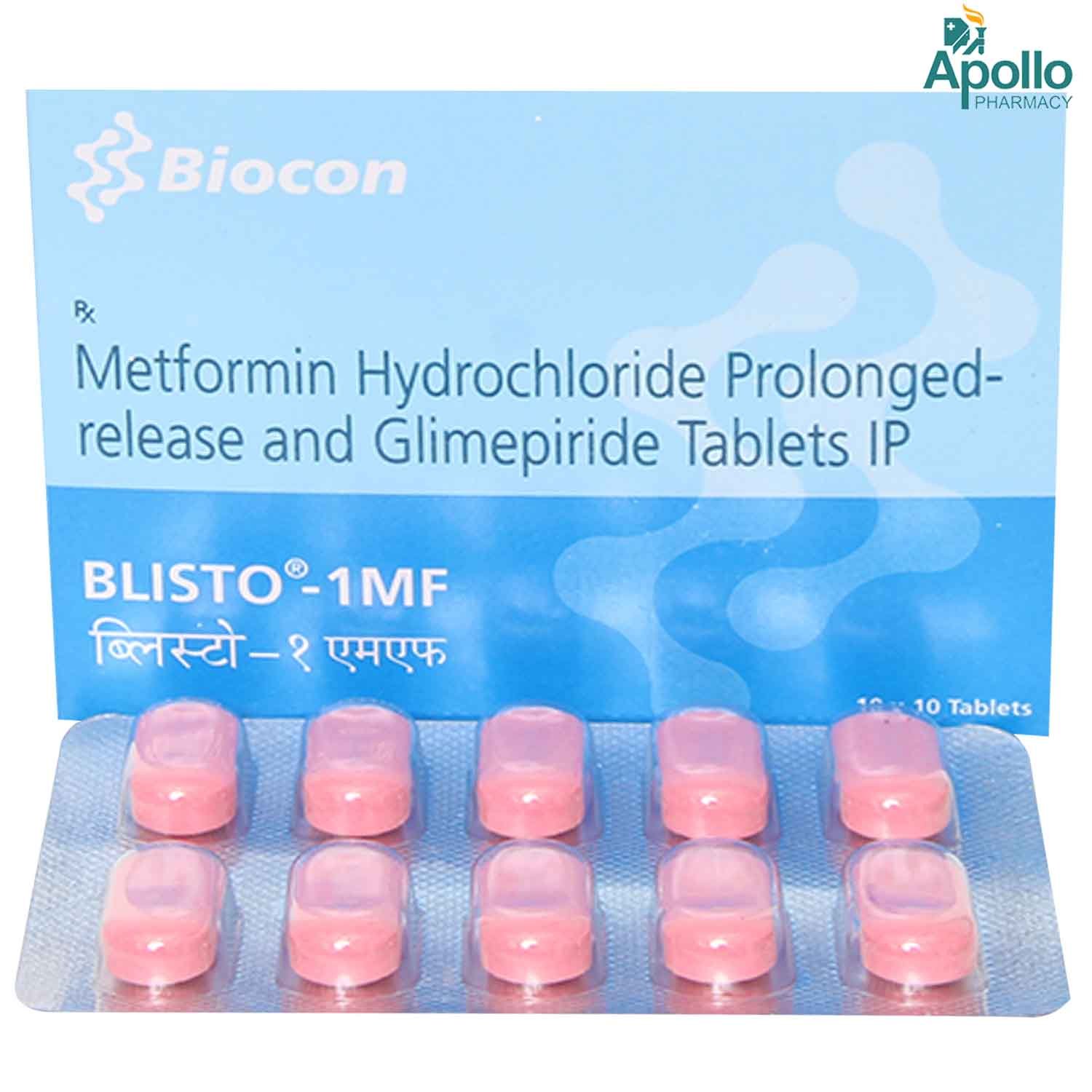
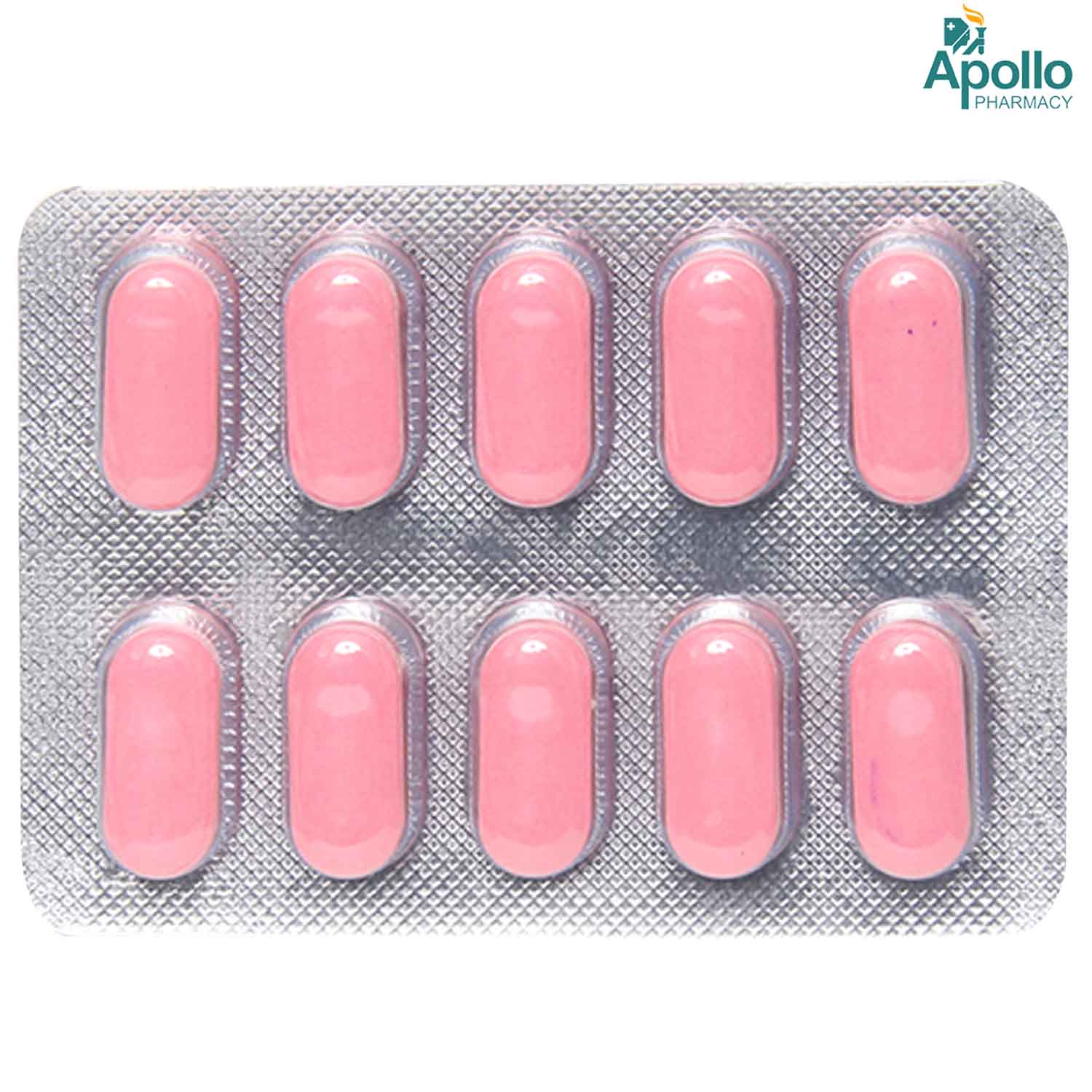
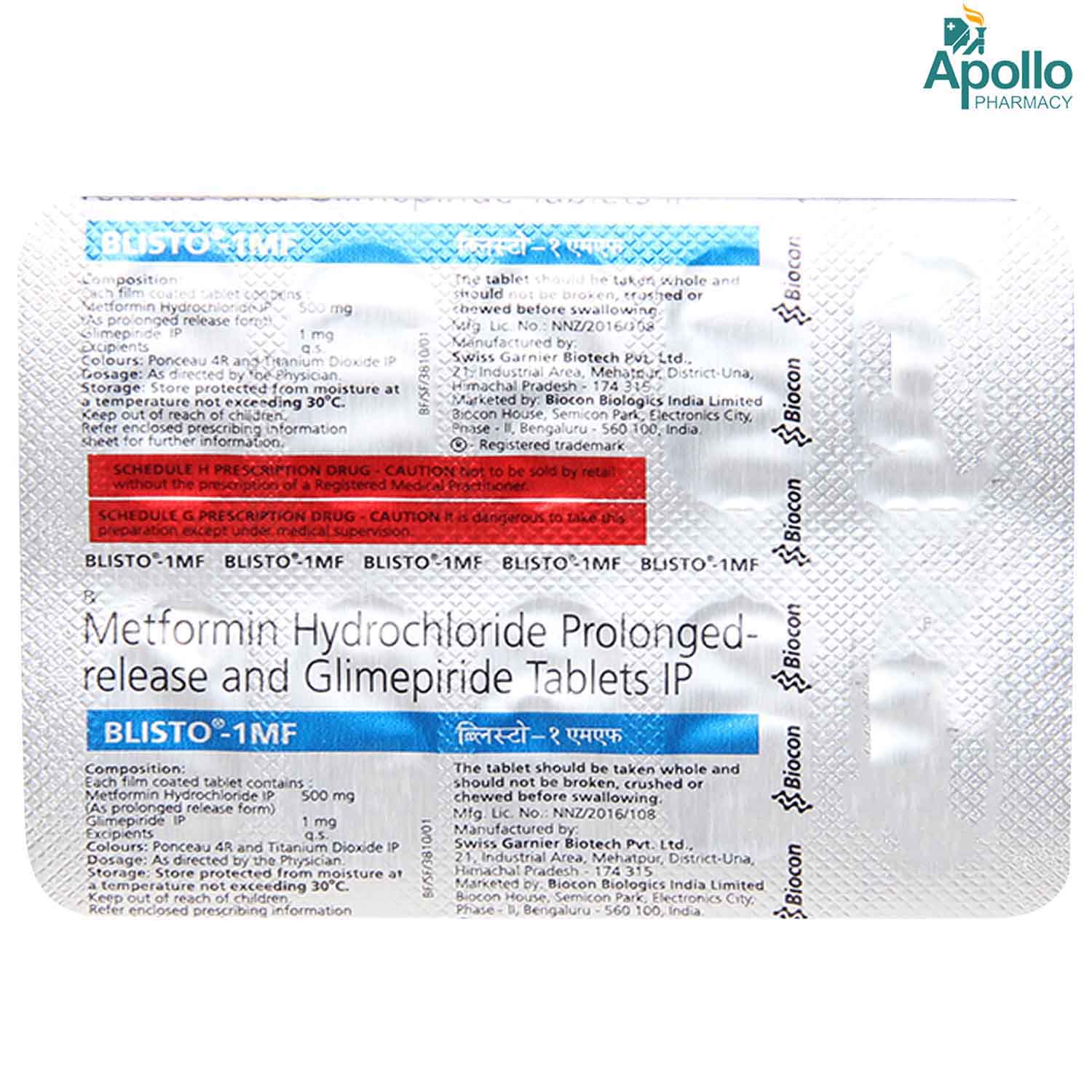





MRP ₹154.5
(Inclusive of all Taxes)
₹23.2 Cashback (15%)
Provide Delivery Location
Online payment accepted
 Prescription drug
Prescription drugWhats That
Composition :
Manufacturer/Marketer :
Consume Type :
Expires on or after :
Return Policy :
About Blisto-1MF Tablet
Blisto-1MF Tablet belongs to a class of medicines called anti-diabetic drugs used in the treatment of type 2 diabetes, especially in patients whose blood sugar levels are not controlled by diet and exercise alone. Type 2 diabetes is a chronic (long-lasting) condition that affects the way our body processes glucose. People with type 2 diabetes either do not produce enough insulin, or the insulin produced is unable to perform its function in the body (insulin resistance).
Blisto-1MF Tablet is a combination of two antidiabetic drugs, namely: Glimepiride and Metformin. Glimepiride works by stimulating beta cells in the pancreas that produce insulin. Thus, insulin helps to remove sugar from the blood. Metformin PR is a prolonged-release formulation that releases the drug in smaller portions over a longer duration of time. Metformin works by reducing the sugar production by cells in the liver and delays sugar absorption from the intestines. Also, it increases the sensitivity of muscle cells to insulin which enables these cells to remove sugar more effectively from the blood.
Take Blisto-1MF Tablet as prescribed by your doctor. You are advised to take Blisto-1MF Tablet for as long as your doctor has prescribed it for you based on your medical condition. In some cases, you may experience stomach pain, nausea, diarrhoea, vomiting, headache or metallic taste. Most of these side effects of Blisto-1MF Tablet do not require medical attention and gradually resolve over time. However, if the side effects persist or worsen, please consult your doctor.
If you are allergic to Blisto-1MF Tablet or any other medicines, please tell your doctor. Blisto-1MF Tablet is not recommended for children. Avoid breastfeeding while taking Blisto-1MF Tablet as it may be excreted in human milk. If you are pregnant or planning for pregnancy, please inform your doctor before taking Blisto-1MF Tablet as it may harm the unborn baby. Avoid alcohol consumption with Blisto-1MF Tablet as it may increase the risk of lactic acidosis (accumulation of lactic acid in the body). Drive only if you are alert after taking Blisto-1MF Tablet . Take short, frequent meals and avoid prolonged fasting while taking Blisto-1MF Tablet .
Uses of Blisto-1MF Tablet
Directions for Use
Key Benefits
Blisto-1MF Tablet contains Glimepiride and Metformin used in the treatment of type 2 diabetes. Glimepiride stimulates cells in the pancreas that produce insulin which helps to remove sugar from the blood. Metformin PR is a prolonged-release formulation that releases the drug in smaller portions over a longer duration of time. Metformin reduces sugar production by cells in the liver and delays sugar absorption from the intestines. Also, it increases the sensitivity of muscle cells to insulin which enables these cells to remove sugar more effectively from the blood.
Storage
Drug Warnings
If you are allergic to Blisto-1MF Tablet or any other medicines, please tell your doctor. Blisto-1MF Tablet is not recommended for children. Avoid breastfeeding while taking Blisto-1MF Tablet as it may be excreted in human milk. If you are pregnant or planning for pregnancy, please inform your doctor before taking Blisto-1MF Tablet as it may harm the unborn baby. Avoid alcohol consumption with Blisto-1MF Tablet as it may increase the risk of lactic acidosis (accumulation of lactic acid in the body). Drive only if you are alert after taking Blisto-1MF Tablet . Take short, frequent meals and avoid prolonged fasting while taking Blisto-1MF Tablet . Beware of symptoms of hypoglycemia (low blood sugar) which include sweating, dizziness, palpitations, shivering, intense thirst, dry mouth, dry skin, frequent urination, etc. Whenever you experience any of these symptoms, immediately consume 5-6 candies or 3 glucose biscuits, or 3 teaspoons of honey/sugar, and also consult your doctor. Make sure to carry these with you at all times, especially during long travels.
Diet & Lifestyle Advise
- Do regular exercise such as cycling, walking, jogging, dancing, or swimming for a minimum of 30 minutes per day. Invest at least 150 minutes of your week in exercise.
- Maintain healthy body weight as obesity is also related to the onset of diabetes.
- Maintain a low-fat and low-sugar diet. Replace carbohydrates-containing foods with whole grains, fruits, and vegetables as carbohydrates turn to sugars leading to high blood sugar.
- Avoid consumption of alcohol and quit smoking.
Side Effects of Blisto-1MF Tablet
- Stomach pain
- Nausea
- Diarrhoea
- Vomiting
- Headache
- Metallic taste
Habit Forming
Therapeutic Class
All Substitutes & Brand Comparisons
RX
Glimestar-M1 Tablet 10's
Mankind Pharma Pvt Ltd
₹74.5
(₹6.71 per unit)
51% CHEAPERRX
Glycomet-GP 1 Tablet 15's
USV Pvt Ltd
₹123
(₹7.38 per unit)
46% CHEAPERRX
Glyciphage-G 1 Tablet 10's
Franco Indian Pharmaceuticals Pvt Ltd
₹87.5
(₹7.88 per unit)
43% CHEAPER
Product Substitutes
Author Details
We provide you with authentic, trustworthy and relevant information
FAQs
Blisto-1MF Tablet contains two antidiabetic drugs, namely: Glimepiride and Metformin. Glimepiride works by stimulating cells in the pancreas that produce insulin which helps to remove sugar from the blood. Metformin PR is a prolonged-release formulation that releases the drug in smaller portions over a longer duration of time. Metformin works by reducing the sugar production by cells in the liver and delays sugar absorption from the intestines. Also, it increases the sensitivity of muscle cells to insulin which enables these cells to remove sugar more effectively from the blood.
You are not recommended to take Blisto-1MF Tablet with phenytoin as it may reduce the effect of Blisto-1MF Tablet and increase blood sugar levels. However, please consult a doctor before using Blisto-1MF Tablet with other medicines.
Blisto-1MF Tablet may increase the risk of low blood sugar levels especially with alcohol intake, exercise more than usual, delay or miss snacks or meal. However, if you experience any signs of low blood pressure such as dizziness, nausea, light-headedness, dehydration or fainting, please consult a doctor.
In type 1 diabetes, the body doesn’t produce insulin as the islet cells (insulin-producing cells) in the pancreas are destroyed completed. In type 2 diabetes, though islet cells are working, the body doesn’t respond to insulin as the body becomes resistant to insulin.
You are not recommended to stop taking Blisto-1MF Tablet on your own as discontinuing Blisto-1MF Tablet suddenly may cause recurring symptoms or worsen the condition. However, if you experience any difficulty while taking Blisto-1MF Tablet , please consult your doctor so that alternative medicine may be prescribed.
Drug-Drug Interactions Checker List
- RIFAMPICIN
- TRIMETHOPRIM
- VERAPAMIL
- CIMETIDINE
- DOLUTEGRAVIR
- RANOLAZINE
- VANDETANIB
- CRIZOTINIB
- OLAPARIB
- FLUCONAZOLE
- MICONAZOLE
- ACETAZOLAMIDE
- INSULIN
- PHENYTOIN
Special Advise
Regular blood tests are recommended while taking Blisto-1MF Tablet to monitor blood sugar levels.
Disease/Condition Glossary
Type 2 diabetes: It is a chronic (long-lasting) condition that keeps the body away from properly utilizing insulin. Hence, people affected with type 2 diabetes either do not produce enough insulin, or there is resistance to the action of insulin. Middle-aged or older are most likely to suffer from type 2 diabetes, so it is also known as adult-onset diabetes. Symptoms of type 2 diabetes include frequent urination at night, increased thirst, slow wound healing, increased hunger, fatigue, and blurred vision. In some cases, there may be weight gain, while in rare cases, weight loss may be observed. The complication of type 2 diabetes also includes nerve problems, kidney problems, damaged retina of eyes or blindness, loss of limbs, sexual dysfunction, and increase chance of heart attack or stroke.

Have a query?
Buy best Diabetics products by
Torrent Pharmaceuticals Ltd
Sun Pharmaceutical Industries Ltd
Eris Life Sciences Ltd
Intas Pharmaceuticals Ltd
Lupin Ltd
Micro Labs Ltd
Mankind Pharma Pvt Ltd
Lloyd Healthcare Pvt Ltd
Alkem Laboratories Ltd
Abbott India Ltd
Glenmark Pharmaceuticals Ltd
Cipla Ltd
Macleods Pharmaceuticals Ltd
Wockhardt Ltd
Dr Reddy's Laboratories Ltd
Primus Remedies Pvt Ltd
USV Pvt Ltd
Aristo Pharmaceuticals Pvt Ltd
Emcure Pharmaceuticals Ltd
Alembic Pharmaceuticals Ltd
Ipca Laboratories Ltd
La Renon Healthcare Pvt Ltd
Ajanta Pharma Ltd
Medley Pharmaceuticals Ltd
East West Pharma India Pvt Ltd
Elbrit Life Sciences Pvt Ltd
Corona Remedies Pvt Ltd
Hbc Life Sciences Pvt Ltd
Sinsan Pharmaceuticals Pvt Ltd
Ranmarc Labs
Mitoch Pharma Pvt Ltd
Zydus Healthcare Ltd
Sanofi India Ltd
Akumentis Healthcare Ltd
Fusion Health Care Pvt Ltd
Unison Pharmaceuticals Pvt Ltd
Jubilant Lifesciences Ltd
Novo Nordisk India Pvt Ltd
Tas Med India Pvt Ltd
Blue Cross Laboratories Pvt Ltd
Msn Laboratories Pvt Ltd
Eswar Therapeutics Pvt Ltd
Indoco Remedies Ltd
Q Check Pharmaceuticals
Alteus Biogenics Pvt Ltd
Anthem Bio Pharma
Franco Indian Pharmaceuticals Pvt Ltd
Systopic Laboratories Pvt Ltd
Panacea Biotec Ltd
Zydus Cadila
Biocon Ltd
Edoc Life Sciences Pvt Ltd
Koye Pharmaceuticals Pvt Ltd
Arkas Pharma Pvt Ltd
Diacardus Pharmacy Pvt Ltd
Elinor Pharmaceuticals (P) Ltd
Remedy Life Sciences Pvt Ltd
Saan Labs
Talent India Pvt Ltd
Jarun Pharmaceuticals Pvt Ltd
Capital Pharma
Shrrishti Health Care Products Pvt Ltd
FDC Ltd
Leeford Healthcare Ltd
Nirvana India Pvt Ltd
Elder Pharmaceuticals Ltd
Eli Lilly and Company (India) Pvt Ltd
Glynis Pharmaceuticals Pvt Ltd
Zuventus Healthcare Ltd
Arrient Healthcare Pvt Ltd
Cadomed Pharmaceuticals India Pvt Ltd
Orris Pharmaceuticals
Akesiss Pharma Pvt Ltd
Bal Pharma Ltd
Biochem Pharmaceutical Industries Ltd
Knoll Healthcare Pvt Ltd
Lippon Pharma Pvt Ltd
Morepen Laboratories Ltd
Neucure Lifesciences Pvt Ltd
Opsis Care Lifesciences Pvt Ltd
Wallace Pharmaceuticals Pvt Ltd
Acmedix Pharma Llp
Converge Biotech Pvt Ltd
Erinyle Pharma
Indiabulls Pharmaceuticals Pvt Ltd
Ozone Pharmaceuticals Ltd
Retra Life Science Pvt Ltd
Alvio Pharmaceuticals Pvt Ltd
Geneaid Pharmaceuticals
Heal (India) Laboratories Pvt Ltd
Olcare Laboratories Pvt Ltd
Vasu Organics Pvt Ltd
Kotak Life Sciences
Lakshya Life Sciences Pvt Ltd
Proqol Health Care Pvt Ltd
Sanz Pharmaceuticals
Daylon healthcare pvt Ltd
Mcronus Lifescience Pvt Ltd
Natco Pharma Ltd
Orsim Pharma
Alcohol
Safe if prescribed
You are recommended to avoid consumption of alcohol with Blisto-1MF Tablet as it may increase the risk of lactic acidosis (accumulation of lactic acid in the body).
Pregnancy
Consult your doctor
Blisto-1MF Tablet is not recommended for pregnant women as it may harm the unborn baby. Please consult a doctor if you are pregnant or planning for pregnancy.
Breast Feeding
Consult your doctor
Avoid breastfeeding while taking Blisto-1MF Tablet as it may be excreted in breastmilk and cause adverse effects in the baby. Therefore, please consult a doctor before using Blisto-1MF Tablet if you are breastfeeding.
Driving
Safe if prescribed
Blisto-1MF Tablet may decrease alertness in some people. Therefore, drive only if you are alert after taking Blisto-1MF Tablet .
Liver
Consult your doctor
Take Blisto-1MF Tablet with caution, especially if you have a history of Liver diseases/conditions. The dose may be adjusted by your doctor as required.
Kidney
Consult your doctor
Take Blisto-1MF Tablet with caution, especially if you have a history of Kidney diseases/conditions. The dose may be adjusted by your doctor as required.
Children
Safe if prescribed
Blisto-1MF Tablet is not recommended for children as the safety and effectiveness were not established.
Recommended for a 30-day course: 3 Strips


